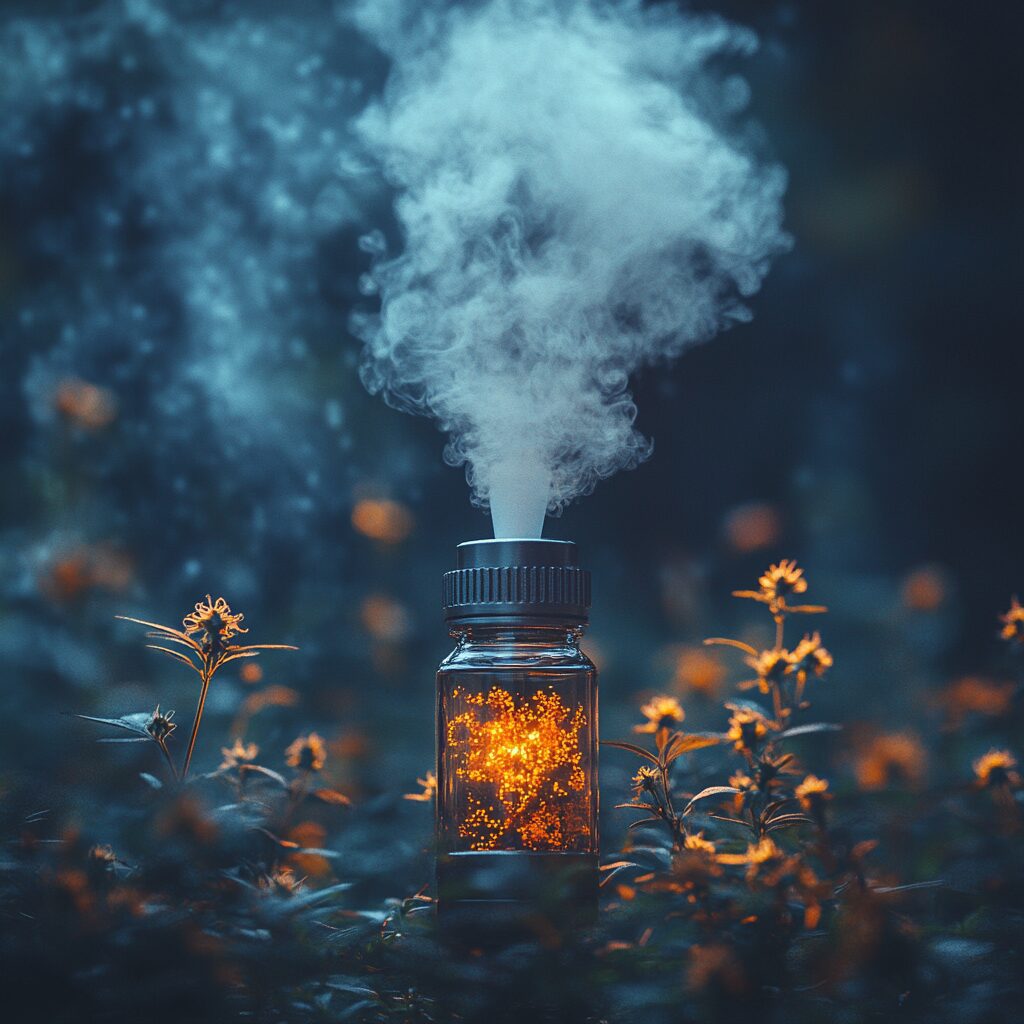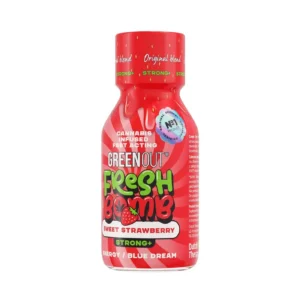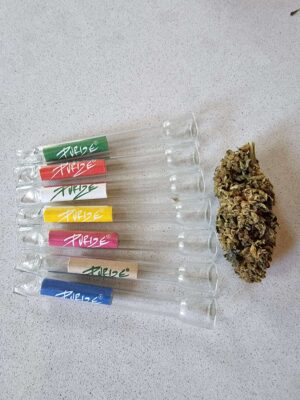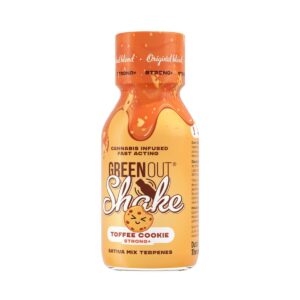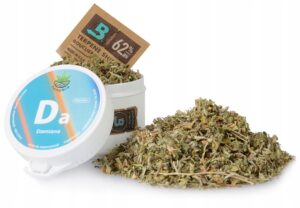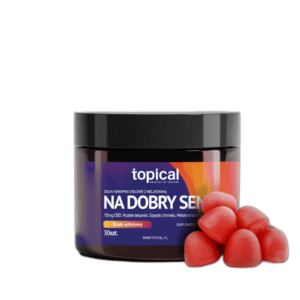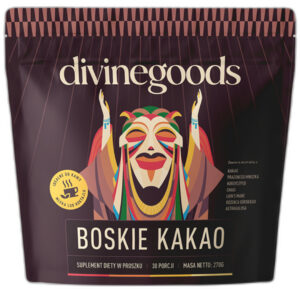Some important aspects:
- Studies suggest that the optimal temperature for cannabis vaporization is between 180°C and 210°C, with the ideal temperature around 185°C, depending on the desired effects.
- Lower temperatures (below 190°C) seem better for psychoactive effects such as euphoria, while higher temperatures (above 190°C) may be more suitable for physical and therapeutic effects.
- It appears that temperatures above 200°C can lead to the release of toxins such as benzene, which is potentially harmful, so caution should be exercised.
- Different compounds, such as THC, CBD and terpenes, have their own specific temperature ranges, allowing you to customize your vaporization.
Introduction to cannabis vaporization
Cannabis vaporization is the process of heating hemp flowers or oils to a temperature where active substances such as cannabinoids and terpenes are released in the form of vapor, without burning the plant. This is considered a healthier alternative to smoking because it reduces exposure to the harmful products of combustion.
Why is temperature important?
Temperature plays a key role, as different substances in hemp have different boiling points. Too low a temperature may not release all the desired effects, and too high a temperature (above 230°C) can degrade valuable compounds and release toxins, such as benzene, which is a carcinogen. The optimal range is 180°C-210°C, with an ideal temperature around 185°C, although preferences may vary depending on the effects you want to achieve.
Temperatures for different compounds
Different compounds in cannabis require different temperatures. Below you'll find a guide to temperatures for cannabinoids, flavonoids and terpenoids, along with their potential effects:
| Union | Temperature (°C) | Effects |
|---|---|---|
| Cannabinoids | ||
| THC | 157 | Euphoric, analytical and relaxing effects |
| CBD | 170 | Therapeutic, reduces anxiety |
| Delta-8-THC | 175 | Similar to THC, less psychoactive |
| CBN | 185 | Relaxing, alleviates the effects of THC |
| CBC | 220 | Antifungal and anti-inflammatory |
| THCV | 220 | Mitigates psychoactive effects of THC, needs research |
| Flavonoids | ||
| Beta-Sitosterol | 134 | Anti-inflammatory |
| Apigenin | 178 | Calming and antioxidant |
| Cannflavin A | 182 | Cyclooxygenase inhibitor |
| Quercetin | 250 | Antioxidant and antiviral |
| Terpenoids | ||
| Caryophyllene | 130 | Anti-inflammatory and antimalarial |
| Terpineol | 156, 217 | Antioxidant, sedative, antibiotic, antimalarial, AChE inhibitor |
| Myrcene | 168 | Analytical, antibiotic, anti-inflammatory |
| Delta-3-Carene | 168 | Anti-inflammatory |
| 1,8-Cineole (Eucalyptol) | 176 | Increases blood flow to the brain, stimulating |
| D-Limonene | 177 | Naturally in hemp |
| p-Cymene | 177 | Antibiotic, acts on fungal infections |
| Linalool | 198 | Antidepressant, sedative, strengthens the immune system |
| Terpinen-4-ol | 209 | Antibiotic, AChE inhibitor |
| Borneol | 210 | Antibiotic |
| Pulegone | 244 | Sedative, improves memory |
Moisture content of the raw material
The moisture content of the cannabis also affects the vaporization process. Cannabis that is too dry can burn out quickly, leading to a loss of flavor and aroma, while cannabis that is too moist may need to be pre-dried at lower temperatures (e.g., 138-148°C) before moving on to vaporizing at optimal temperatures, such as 165°C for CBD or 155°C for THC in the case of moist material.
- Benefits of vaporization: healthier than smoking, no burning, cleaner method.
- Importance of temperature: too low a temperature leads to lack of taste and effectiveness, too high (>230°C) degrades terpenes and cannabinoids, risk of inhaling toxins. The optimal range is 180°C-210°C, ideal temperature is 185°C, below 190°C for psychoactive effects, above for physical effects.
- Toxins: above 200°C risk of toxins, such as benzene at 205°C, which is carcinogenic.
Material that is too dry can lead to rapid burnout, and material that is too wet requires pre-drying at 138-148°C, followed by vaporization at appropriate temperatures, e.g. CBD at 165°C, THC at 155°C.
- Choosing the right vaporization temperature for herbs depends on their active compounds, with ranges typically ranging from 100°C to 220°C.
- Lower temperatures (100-150°C) are suitable for herbs such as chamomile, while higher temperatures (180-220°C) are better suited for oregano or thyme.
- Studies suggest that temperature affects the release of flavor, aroma and therapeutic effects, but exact ranges may vary depending on the source.
- An unexpected detail may be that some herbs, like cloves, have reported ranges (125-150°C), which may be controversial given the boiling points of their compounds.
Choosing the right vaporization temperature for different herbs
Herbal vaporization involves heating herbs to a temperature at which their active compounds are released as a vapor, without burning the plant material. This method is commonly used in vaporizers for dry herbs for consumption or in diffusers for aromatherapy. Choosing the right temperature is crucial to maximize benefits such as flavor, aroma and therapeutic effects, while minimizing the risk of harmful substances.
Why is temperature important?
Temperature plays a key role, as different chemical compounds in herbs have different boiling points. Setting the right temperature ensures that the desired active compounds, such as terpenes or cannabinoids in the case of cannabis, are released, while minimizing the risk of harmful combustion products that can occur above 230°C. For example, lower temperatures (100-150°C) are suitable for more volatile compounds, such as those in chamomile, while higher temperatures (180-220°C) are better for less volatile ones, such as carvacrol in oregano.
Temperature ranges for different herbs
The table below contains recommended temperature ranges for vaporizing various herbs, based on an analysis of sources, with potential differences noted. It is worth noting that some ranges, such as for cloves (125-150°C), may be controversial, given the boiling points of their key compounds, such as eugenol (around 250°C).
| Herb | Temperature range (°C) | Comments |
|---|---|---|
| Anise | 150-175 | Diastolic and expectorant properties |
| Basil | 150-200 | Culinary herb, rich in linalool and eugenol |
| Chamomile | 100-125 | Anti-inflammatory, relaxing properties |
| Cloves | 125-150 | Antiseptic, antibacterial, antiviral properties |
| Damian | 150-175 | Calming and antiseptic properties, natural antidepressant |
| Eucalyptus | 150-200 | Strong antiseptic properties, helps treat coughs and colds |
| Lavender | 150-200 | Relaxing and aromatherapeutic properties |
| Mint | 150-200 | Antiseptic properties, refreshing aroma |
| Oregano | 180-220 | Culinary herb, antimicrobial properties |
| Peppermint | 150-200 | Aids digestion, refreshing aroma |
| Rosemary | 150-200 | Culinary herb, antioxidant properties |
| Sage | 150-200 | Culinary and medicinal herb, anti-inflammatory properties |
| Thyme | 180-220 | Culinary herb, antimicrobial properties |
Notes: For cloves, the range given (125-150°C) may be too low compared to the boiling point of eugenol (about 250°C), suggesting that there may be other compounds released at lower temperatures. It is worth monitoring the effects and adjusting the temperature depending on your device and preferences.
Tips for selecting the temperature
To choose the right temperature for a particular herb, select:
- Identify key active compounds in herbs and their boiling points.
- Choose a temperature range that allows the release of these compounds without burning the herb, usually between 100°C and 230°C.
- Start at a lower temperature and gradually increase if the results are not satisfactory, avoiding exceeding the combustion point (usually above 230°C), which can lead to the inhalation of toxic compounds.
Definition of herbal vaporization
Herbal vaporization is the process of heating herbs to a temperature where their active compounds are released as vapor, avoiding the combustion of the plant material. This method is commonly used in vaporizers for dry herbs for consumption, such as inhalation for therapeutic effects, or in diffusers for aromatherapy. For example, eucalyptus can be vaporized for its antiseptic properties, and chamomile for its relaxing effects.
Meaning of temperature
Temperature plays a key role, as different chemical compounds in herbs have different boiling points. Setting the right temperature ensures that the desired active compounds, such as terpenes or cannabinoids in the case of cannabis, are released, while minimizing the risk of harmful combustion products that can occur above 230°C. For example, lower temperatures (100-150°C) are suitable for more volatile compounds, such as those in chamomile, while higher temperatures (180-220°C) are better for less volatile ones, such as carvacrol in oregano.
How do you choose the right temperature?
To choose the right temperature for a particular herb, select:
- For example, chamomile contains bisabolol (a boiling point of about 287°C), but some compounds, like chamazulene, can be released at lower temperatures.
- Choose a temperature range that allows the release of these compounds without burning the herb, usually between 100°C and 230°C. Lower temperatures (100-150°C) are suitable for herbs with more volatile compounds, and higher temperatures (180-220°C) for those with less volatile ones.
- Start at a lower temperature and gradually increase if the results are not satisfactory, avoiding exceeding the combustion point (usually above 230°C), which can lead to the inhalation of toxic compounds.
Frequently Asked Questions (FAQs) about Vaporizing Herbs and Hemp.
Why is temperature important in vaporizing herbs?
- Temperature is crucial, as it affects the release of active ingredients contained in plants. The higher the temperature, the faster and more intensely these compounds are revealed.
- Note: However, it should be remembered that excessively high temperatures can lead to the degradation of valuable ingredients and the production of harmful substances.
What are the optimal temperatures for different types of herbs and cannabis?
- Each plant species has its own specific characteristics. For example:
- Peppermint: 160-210°C
- Thyme: 180-240°C
- Lavender: 200-250°C
- Indian hemp (Cannabis sativa): 180-230°C
- Fiber hemp (Cannabis sativa var. industrialis): 190-240°C
Can the same temperatures be used for different herb blends?
- No, not all herb blends have the same temperature requirements. It is recommended to adjust the temperature to the lowest active ingredient release temperature for the component in the blend.
- Example: If you have a blend of herbs where one of the ingredients is peppermint (160°C) and the other is thyme (180°C), you should set the vaporization temperature to 160°C.
How can I control and monitor the temperature during vaporization?
- Most modern vaporizers are equipped with precise thermometers and the ability to adjust the temperature. Some models also offer automatic temperature adjustment programs for specific types of herbs.
- Note: If you are using a vaporizer without a thermometer, it is a good idea to check the instruction manual and consult a specialist or another experienced user.
Are there herbs that can be vaporized without fear of overheating?
- Yes, some plant species are less sensitive to temperature. Examples include eucalyptus (up to 260°C) and lemon balm (250°C). However, even these herbs can lose some of their properties at excessively high temperatures.
- Note: It's always a good idea to run a trial on a small portion of herbs to determine the optimal temperature for a particular species.
Is it safe to use the same temperatures for vaporizing cannabis and fiber cannabis?
- Temperatures for both types of hemp are similar, but not identical. Cannabis may require slightly lower temperatures (180-230°C) than fiber hemp (190-240°C).
- Note: Due to differences in the content of active ingredients, it is recommended to adjust the temperature individually for each type of hemp.
How often should I clean and maintain my vaporizer?
- It is recommended to regularly clean the heating chamber, mouthpiece and other components of the vaporizer after each use. In addition, it is a good idea to perform periodic maintenance according to the manufacturer's instructions.
- Note: An improperly maintained vaporizer can lead to the deposition of plant residues, which can affect the taste and quality of the vapor.
What are the potential health benefits of vaporizing herbs?
In recent years, vaporization of herbs has become increasingly popular as an alternative method of consuming medicinal plants. Unlike traditional smoking, vaporization involves heating the dried herb without burning it, allowing the active ingredients to be extracted as a vapor, which can then be inhaled. This method has many potential health benefits and is gaining recognition among those seeking natural ways to improve well-being.
Relieve pain and inflammation:
Vaporizing herbs such as oil mint, lavender and lemon balm can provide relief from joint and muscle pain and reduce inflammation. Studies indicate that these plants contain substances with anti-inflammatory and analgesic effects, such as menthol and linalool. Compared to other methods of using herbs, vaporization allows the active ingredients to penetrate the body more quickly and can be more effective in relieving symptoms.
Improving mood and reducing anxiety:
Herbs such as valerian, lavender and lemon balm are often used in aromatherapy treatments for their calming and anti-anxiety properties. Vaporizing these plants can help reduce symptoms of stress, anxiety and improve mood, which is especially important in today's challenging and pressured times.
Respiratory support:
Herbs such as eucalyptus, sage and thyme can be beneficial for people with respiratory problems. Vaporizing these plants can help clear the respiratory tract, relieve cold and flu symptoms, and support overall lung function. Due to its direct action on the respiratory tract, vaporization can be more effective than traditional methods of using herbs.
Improving sleep quality:
The melatonin found in lemon balm and other components present in lavender and valerian have a calming effect, which can help regulate the sleep cycle and improve the quality of nighttime rest. Vaporizing these herbs before bedtime can be a natural way to deal with insomnia and other sleep problems.
Digestive System Support:
Herbs such as peppermint, lemon balm and chamomile can support the functioning of the digestive system. Vaporizing these plants can help relieve stomach discomfort, bloating and improve digestion. Because the active ingredients are directly delivered to the body, they can affect the digestive system faster and more effectively than if the herbs are taken orally.
Immune system support:
Herbs with antioxidant properties, such as thyme and rosemary, can support the body's natural defenses. Vaporizing these plants can help maintain the health of the immune system and protect against infections and inflammatory diseases.
Herbal vaporization is a method that offers many potential health benefits, from relieving pain and inflammation to supporting the respiratory, digestive and immune systems. Due to its direct action on the body and faster penetration of active ingredients, vaporization can be more effective than other methods of using herbs. However, it is important to remember to take a personalized approach to using herbs and to consult with specialists, especially if you are taking prescription medications or suffer from chronic conditions. Herbal vaporization can be a natural and effective way to improve well-being, but as with any therapy, it should be used consciously and responsibly.
